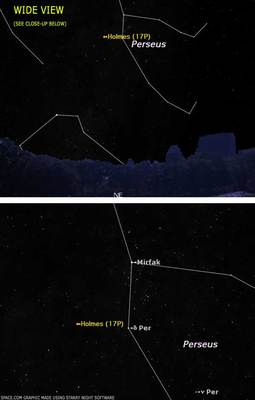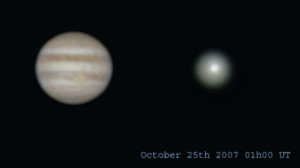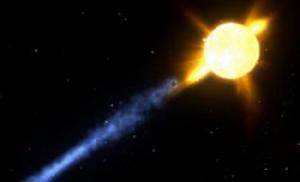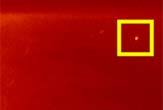A small and very faint comet has surprised observers around the world by overnight becoming bright enough to see with the unaided eye.
Comet Holmes, which was discovered in November 1892 by Edwin Holmes, in London England, was no brighter than magnitude 17 in mid-October - that's about 25,000 times fainter than the faintest star that can normally be seen without any optical aid. In order to view an object this faint, one would need a moderately large telescope.

|
| ©Space.com
|
| Comet Holmes' location as of Oct. 24th at 8 p.m. local time from midnorthern latitudes.
|




Comment: To find out more about comets and how often they actually collide with our planet, read: Forget About Global Warming: We're One Step From Extinction!